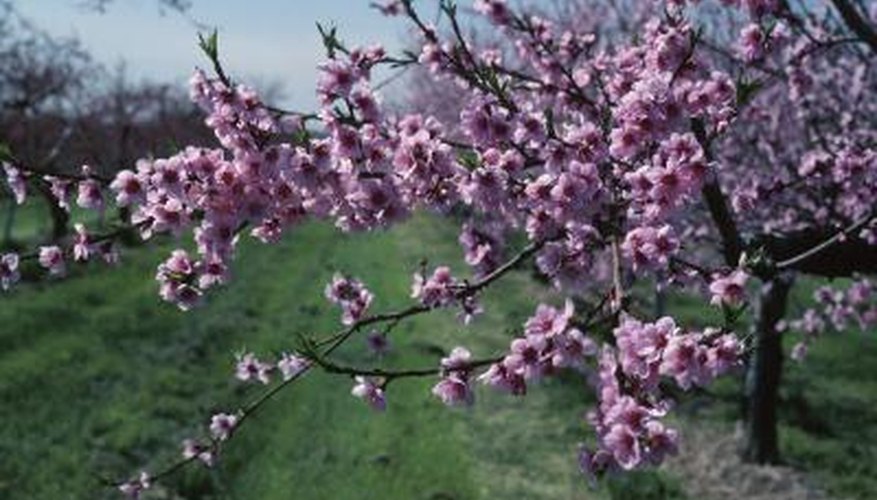Apple trees are known for their lovely blooms and delicious fruit. However, apple trees can experience sudden wilting and dieback. Insect infestations and disease are the two most common causes of wilting apple leaves, and both can cause reduced fruit yield and reduced plant vigour.
Insect cause
Aphids are common pests of a variety of trees such as apple, elm, plum, willow, currant, juniper, rose and walnut. Some species of aphids do not cause serious or noticeable damage to host trees, but some can cause serious effects such as sudden wilting or reduced vigour. Aphids are very tiny pests and difficult to see with the naked eye. These pests usually live on the undersides of apple leaves, where they feed on the leaves extracting plant sap. As a result of feeding apple leaves become speckled, wilt and curl. Dieback of new shoots may result from aphid feeding, as well. Aphids can cause a condition known as grey sooty mould to develop on infested apple trees. Gray sooty mould is caused by fungi that adheres to apple leaves from the honeydew produced by aphids during feeding.
- Aphids are common pests of a variety of trees such as apple, elm, plum, willow, currant, juniper, rose and walnut.
- Aphids can cause a condition known as grey sooty mould to develop on infested apple trees.
Disease cause
Fire blight is a disease that often affects apple trees, as well as mountain ash and crabapples. This disease causes wilting of blossoms, black fruit and an overall scorched appearance. Some varieties of apple trees are resistant to fire blight such as Red Delicious. Golden Delicious, Lodi and Jonathan are considered susceptible to fire blight. Sucking insects such as aphids, often carry bacteria and feeding may create an entry point for fire blight bacteria. Apple trees with fire blight often ooze a milky substance and fruit is mummified, but remains on the tree.
- Fire blight is a disease that often affects apple trees, as well as mountain ash and crabapples.
- Apple trees with fire blight often ooze a milky substance and fruit is mummified, but remains on the tree.
Cultural control
Aphids are often controlled by spraying your apple tree leaves with a hard stream of water from the garden hose. This process knocks aphids from apple leaves and keeps their population low. Perform this task twice each week for best results. Fire blight may be controlled by keeping your apple tree healthy and vigorous. Avoid applying nitrogen-rich fertilisers and prune out any diseased limbs, sterilising pruning tools between cuts.
- Aphids are often controlled by spraying your apple tree leaves with a hard stream of water from the garden hose.
- Fire blight may be controlled by keeping your apple tree healthy and vigorous.
Chemical control
Horticultural oils are effective in eliminating and controlling aphid infestations on apple trees. These products work on contact with the insect, so be sure to cover the leaves entirely with oil. Horticultural oils also help remove sooty mould fungi, as well. Fire blight often requires streptomycin sprays for control. Follow all directions on the manufacturers label and never apply this product closer than 50 days to harvest on apple trees.
- Horticultural oils are effective in eliminating and controlling aphid infestations on apple trees.
- These products work on contact with the insect, so be sure to cover the leaves entirely with oil.
